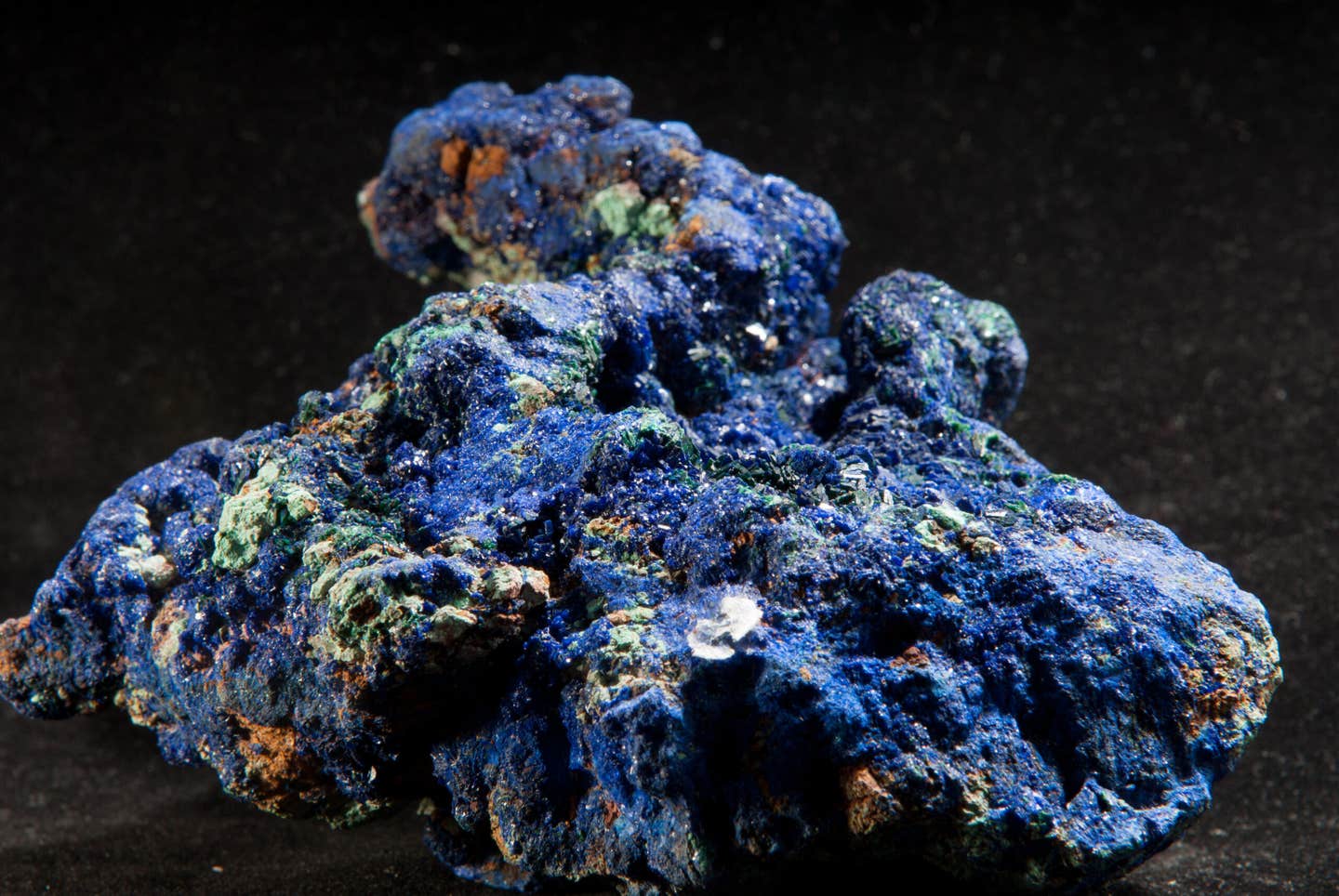Earth can self-correct and stabilize run-away climate change, study finds
In Earth’s history, many catastrophic events — from volcanic eruptions to freezing ice ages have tried to disrupt the planet’s equilibrium

In Earth's long history, a large number of catastrophic events — from colossal volcanic eruptions to freezing ice ages have tried to disrupt the planet's equilibrium. (CREDIT: Creative Commons)
In Earth's long history, a large number of catastrophic events — from colossal volcanic eruptions to freezing ice ages and dramatic shifts in solar radiation — have tried to disrupt the planet's equilibrium. Yet, life on Earth, impressively enduring for 3.7 billion years, hasn’t missed a beat. But why?
A groundbreaking study from Massachusetts Institute of Technology (MIT) offers compelling evidence of a long-suspected geophysical hero: a stabilizing feedback mechanism that acts as Earth's thermostat, ensuring global temperatures remain within a range conducive to life.
Earth's Natural Regulator: Silicate Weathering
At the heart of this discovery lies the concept of “silicate weathering” - a slow-burning geological phenomenon wherein the steady decomposition of silicate rocks triggers chemical reactions, meticulously pulling carbon dioxide from the atmosphere and entrapping it within ocean sediments and rocks.
Root mean square temperature fluctuations ΔTrms as a function of time scale Δt (Materials and Methods) for five different paleotemperature time series and three nonoverlapping segments of the data from (36). Power-law scalings with fixed exponents H are shown as guides for interpretation. (CREDIT: Science Advances)
For eons, scientists have been tantalized by the theory that silicate weathering might be Earth's ultimate regulator, maintaining the delicate balance in the carbon cycle.
Could this geological mechanism be the ever-vigilant sentinel, keeping a cap on carbon dioxide levels and, in turn, global temperatures? Though widely theorized, concrete evidence supporting this continuous feedback loop has been elusive, until now.
The MIT research, published in the prestigious Science Advances, is revolutionary as it harnesses actual data to corroborate the existence of this stabilizing feedback, pinpointing silicate weathering as the likely mechanism that has shielded Earth during its most tempestuous climatic chapters.
Related Stories
Constantin Arnscheidt, a graduate prodigy from MIT’s Department of Earth, Atmospheric, and Planetary Sciences (EAPS), elaborates: “On the one hand, it’s good because we know that today’s global warming will eventually be canceled out through this stabilizing feedback. But on the flip side, it's a slow dance, taking hundreds of thousands of years, rendering it an ineffective solution to our pressing climate concerns.”
Unraveling Climate's Secrets with Ancient Data
Historically, the remnants of ancient rocks have offered mere glimpses of this climate-balancing act, revealing a consistently steady flow of carbon, even amidst wild temperature swings. Silicate weathering models have hinted at a probable climate stabilization effect. The enduring habitability of Earth further underscored the possibility of an intrinsic geological mechanism countering extreme temperature fluctuations.
Yet, the big question remained: Was this stabilizing feedback mechanism a consistent player in Earth's climatic saga? Arnscheidt, alongside the distinguished Professor of Geophysics at MIT, Daniel Rothman, delved deep into the annals of Earth's climatic history, utilizing a treasure trove of temperature records. Their resources were expansive, ranging from the chemical DNA of ancient marine fossils and shells to the time-capsuled secrets within Antarctic ice cores.
A system with multiple partially stabilizing feedbacks can display the same behavior observed in the data. In our simple conceptual model, Earth’s surface temperature T is given by the sum of some stochastic processes with stabilizing feedbacks and some without. (CREDIT: Science Advances)
Arnscheidt emphasizes the importance of their tools, stating, “This whole study is only possible because there have been great advances in improving the resolution of these deep-sea temperature records. We're now armed with a 66-million-year-old data timeline, with data points often just thousands of years apart.”
Decoding Patterns in the Climate Matrix
The duo turned to the intricate mathematical realm of stochastic differential equations, a tool adept at discerning patterns in erratic datasets. “This theory makes predictions for what you would expect Earth’s temperature history to resemble if feedbacks were at play at certain intervals,” says Arnscheidt.
The observation that fluctuation amplitudes increase like a random walk again beyond 400 ka, even though the silicate weathering feedback remains active, could potentially be understood as follows. On time scales below about 400 ka, silicate weathering acts as a feedback, driving the system toward a steady state. On longer time scales, the steady state itself moves, and weathering acts as a forcing. There is still damping toward the steady state; the key point is that there is no damping on the motion of the steady state itself. (CREDIT: Science Advances)
Their analytical journey traversed the temperature timelines of the past 66 million years, focusing on distinct timescales to discern any stabilizing feedback patterns. Rothman draws an analogy, “It’s akin to a car hurtling down a street. Applying the brakes causes it to skid for a while before it halts. There's a definite timescale during which a stabilizing feedback, or resistance, sets in, restoring equilibrium.”
The team's meticulous analysis revealed a consistent trend: at a certain timescale — hundreds of thousands of years — global temperature fluctuations were curbed, suggesting the intervention of a stabilizing force. The timescale perfectly aligned with the theoretical predictions for silicate weathering.
The observation that fluctuation amplitudes increase like a random walk again beyond 400 ka, even though the silicate weathering feedback remains active, could potentially be understood as follows. Considering Earth’s “weathering curve,” it is clear how changes such as an increase in weatherability can move the steady state that silicate weathering establishes. (CREDIT: Science Advances)
A Blend of Design and Fortune
On exploring longer timescales, a peculiar observation emerged: no signs of stabilizing feedbacks. This raised a profound question: what, then, held the reins of global temperatures during these extended intervals?
Rothman muses, “There’s an idea that chance may have played a major role in determining why, after more than 3 billion years, life still exists.”
The duo proposes that as Earth’s temperatures oscillate over longer durations, these variations might coincidentally remain within bounds, allowing periodic intervention by stabilizing feedbacks like silicate weathering, ensuring the climate remains life-friendly.
Air temperatures on Earth have been rising since the Industrial Revolution. (CREDIT: NASA)
Arnscheidt summarizes their findings: “There are two camps: Some advocate for random chance, while others are convinced of a stabilizing feedback. Our data-driven research suggests the reality is an intricate dance between the two. Earth's habitability might owe as much to systematic stabilization as it does to sheer cosmic luck.”
In the end, this monumental study not only unravels one of Earth's oldest mysteries but also serves as a poignant reminder: while nature has its checks and balances, the onus is on us to address our immediate environmental challenges, for the planet's inbuilt mechanisms might not act swiftly enough.
For more science stories check out our New Discoveries section at The Brighter Side of News.
Note: Materials provided above by the The Brighter Side of News. Content may be edited for style and length.
Like these kind of feel good stories? Get the Brighter Side of News' newsletter.



